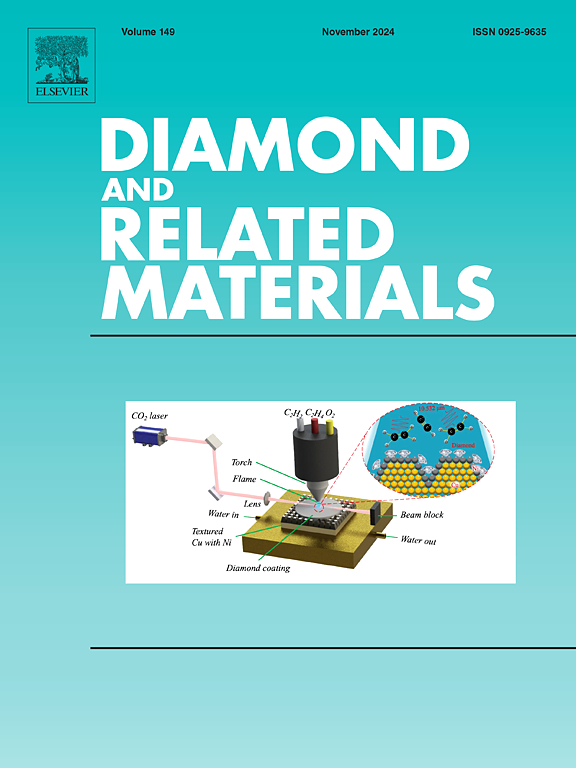光激发下金刚石的双极输运:激子自由电荷散射的证据
IF 5.1
3区 材料科学
Q2 MATERIALS SCIENCE, COATINGS & FILMS
引用次数: 0
摘要
通过测量具有欧姆样低阻B+夹层触点的均匀光激发样品的时间分辨光电性,研究了超纯金刚石中库仑e-h相互作用的基本特征。我们证明,在电场中,当光注入密度为1014 - 1016 cm - 3时,双极电荷迁移率急剧下降,这不能仅用自由e-h粒子之间的相互散射来解释。通过添加光激子密度增加引起的散射来澄清这一现象。本文比较了本研究获得的金刚石在300 K时的漂移迁移率与文献中获得的纯Si和Ge的漂移迁移率,其中激子散射不显著。我们得到了在高达1kv /cm的电场下双极迁移率的密度依赖性的经验表达式,这可能对金刚石电子器件的开发有用。本文章由计算机程序翻译,如有差异,请以英文原文为准。

Bipolar transport in diamond under photo-excitation: Evidence of free charge scattering by excitons
The fundamental characteristics of the Coulomb e-h interactions in ultra-pure diamond are investigated through time-resolved photoconductivity measurements in homogeneously photoexcited samples with ohmic-like low resistive B+ sandwich contacts. We demonstrate that, in the electric field, the bipolar charge mobility exhibits drastic reduction for photo-injected densities of 1014‐1016 cm‐3 that cannot be explained only by mutual scattering between free e-h particles. This phenomenon is clarified by adding scattering caused by excitons whose density grows in the photo-exited system. The comparison of drift mobilities at 300 K in diamond obtained in this study and in pure Si and Ge obtained from literature, where exciton scattering is insignificant, is presented. We derive the empirical expression for the density dependences of bipolar mobility for the electric fields up to 1 kV/cm that could be useful for the development of diamond electronic devices.
求助全文
通过发布文献求助,成功后即可免费获取论文全文。
去求助
来源期刊

Diamond and Related Materials
工程技术-材料科学:综合
CiteScore
6.00
自引率
14.60%
发文量
702
审稿时长
2.1 months
期刊介绍:
DRM is a leading international journal that publishes new fundamental and applied research on all forms of diamond, the integration of diamond with other advanced materials and development of technologies exploiting diamond. The synthesis, characterization and processing of single crystal diamond, polycrystalline films, nanodiamond powders and heterostructures with other advanced materials are encouraged topics for technical and review articles. In addition to diamond, the journal publishes manuscripts on the synthesis, characterization and application of other related materials including diamond-like carbons, carbon nanotubes, graphene, and boron and carbon nitrides. Articles are sought on the chemical functionalization of diamond and related materials as well as their use in electrochemistry, energy storage and conversion, chemical and biological sensing, imaging, thermal management, photonic and quantum applications, electron emission and electronic devices.
The International Conference on Diamond and Carbon Materials has evolved into the largest and most well attended forum in the field of diamond, providing a forum to showcase the latest results in the science and technology of diamond and other carbon materials such as carbon nanotubes, graphene, and diamond-like carbon. Run annually in association with Diamond and Related Materials the conference provides junior and established researchers the opportunity to exchange the latest results ranging from fundamental physical and chemical concepts to applied research focusing on the next generation carbon-based devices.
 求助内容:
求助内容: 应助结果提醒方式:
应助结果提醒方式:


